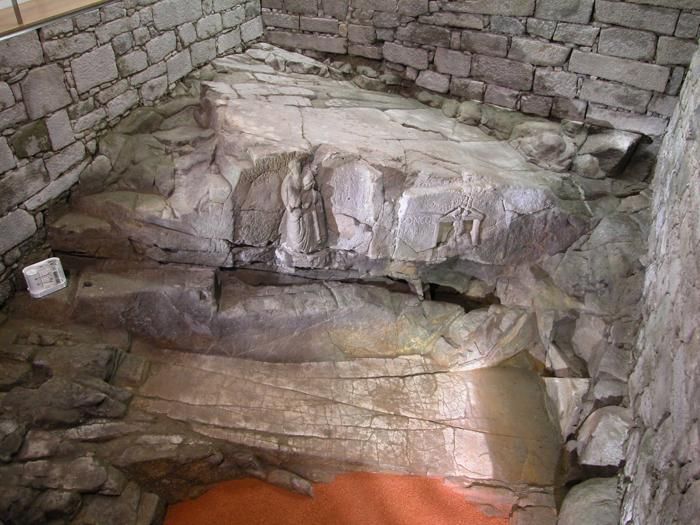On Rua do Raio, one of the main arteries of the city centre, there is the Fonte do Ídolo (Fountain of the Idol), a rock-cut sanctuary from the beginning of the 1st century associated with the cult of water. Its origin is doubtful, but it is believed to be due to a Roman citizen called Celico Fronto, who generously offered the monument to the community of Bracara Augusta.
This granite fountain has two figures represented, which do not generate consensus. Some believe it is a bust of Celico Fronto and, on the other hand, there are those who believe it is a representation of the god Tongoenabiago.
In the ancient capital of the Conventus Bracara Augustanus, a rock-cut sanctuary was built at the beginning of the 1st century that is today known as the Fountain of the Idol, associated with the cult of water. It was probably built by Celico Fronto, a Roman citizen, who ordered it to be built for the enjoyment of the community of Bracara Augusta.
The uniqueness of this granite fountain led to its classification as a National Monument in 1910. More recently, between 2001 and 2004, it was the subject of major museum works, with the construction of a structure that protects the monument and allows the public to visit it in excellent conditions.
The public can benefit from guided tours in a context that combines history and archaeology in a 21st century architectural solution.
The heritage asset and the public are guaranteed suitable climatic conditions and accessibility requirements for people with reduced mobility.
Translation done with the free version of the DeepL.com translator

 Braga, Northern Portugal
Braga, Northern Portugal





 Página Web
Página Web 




